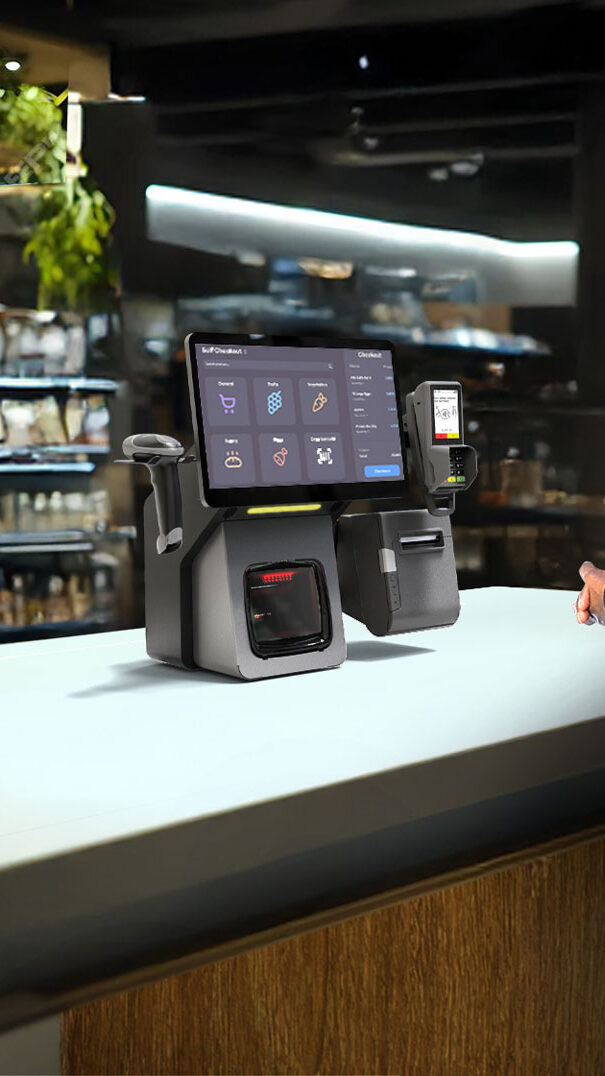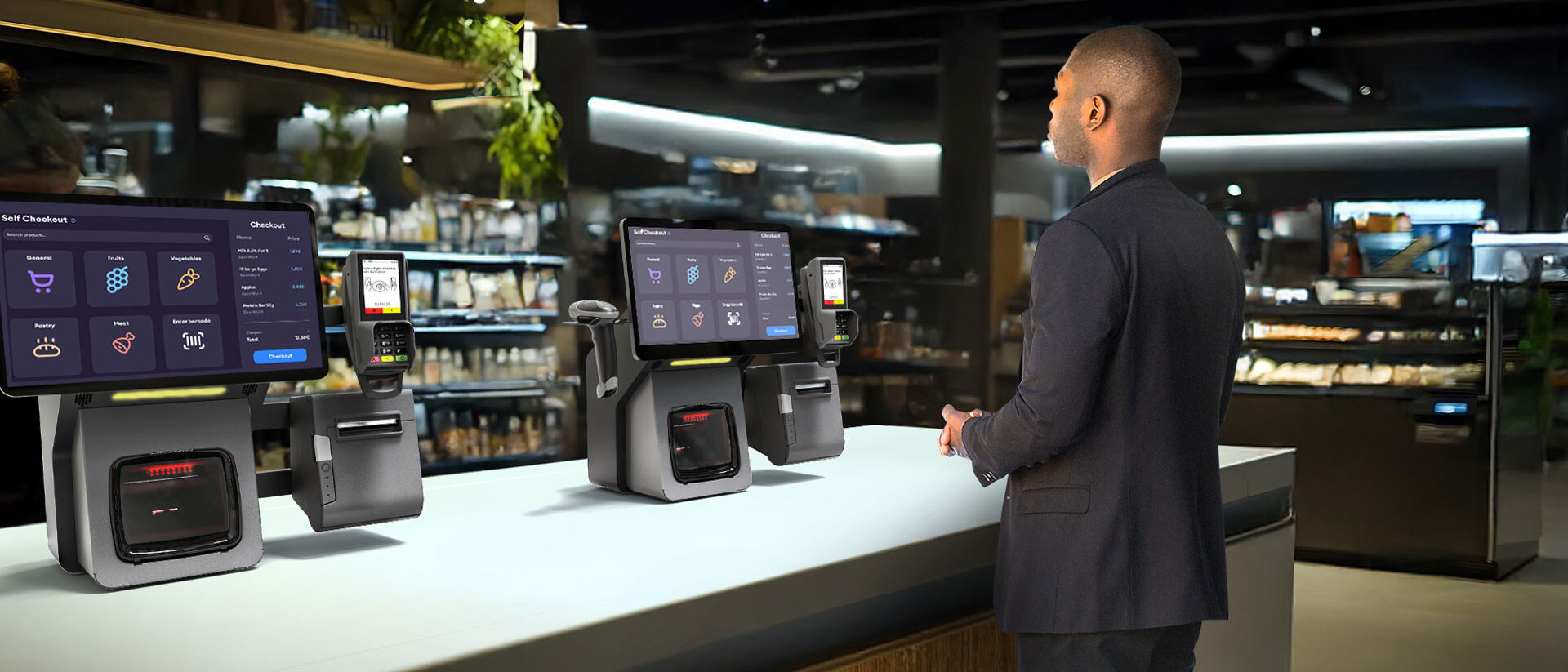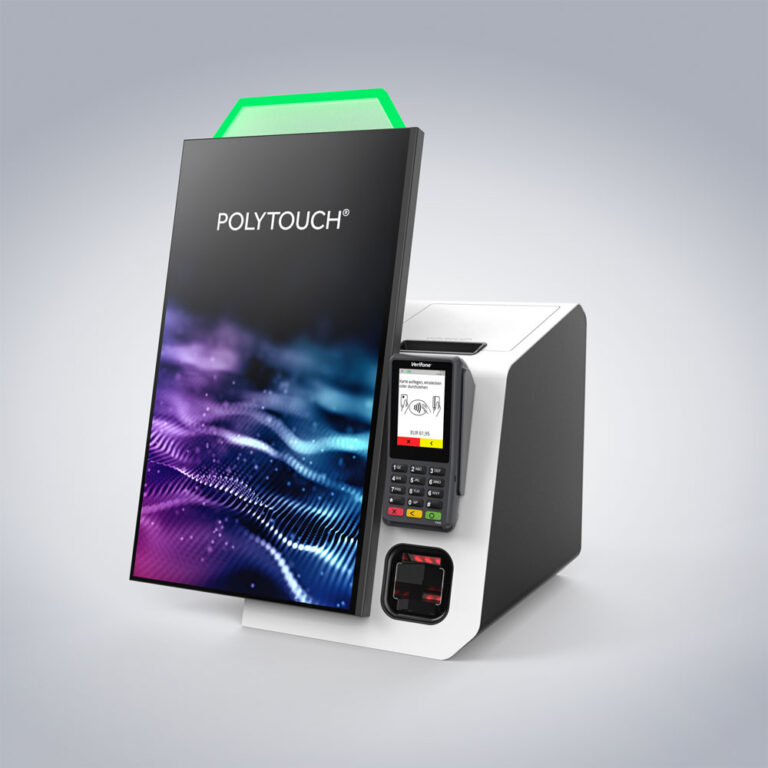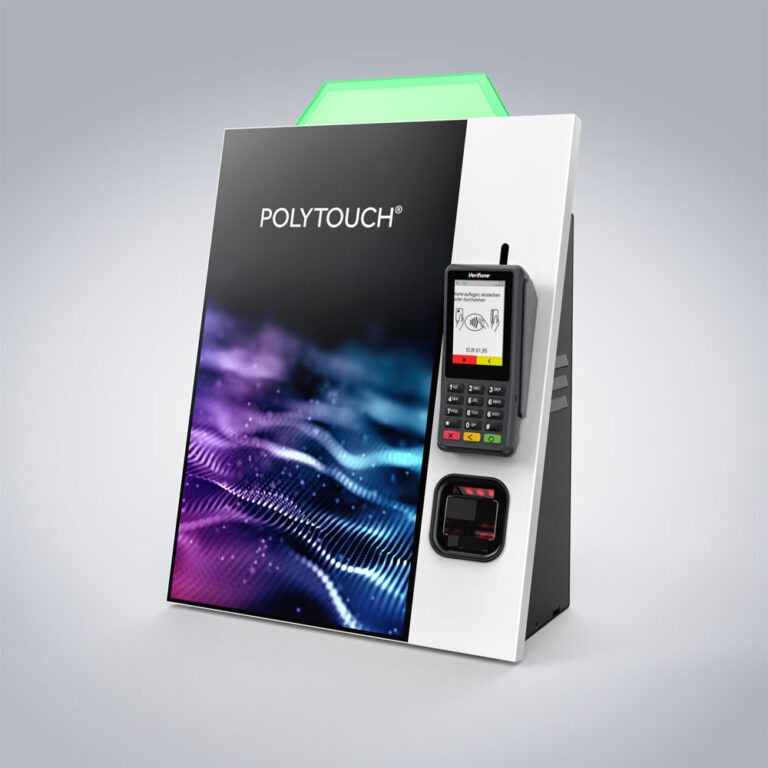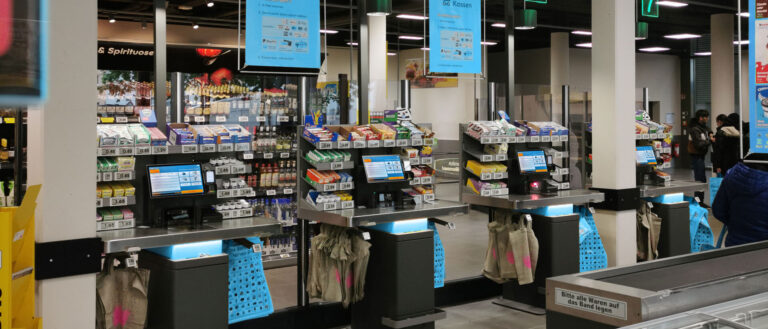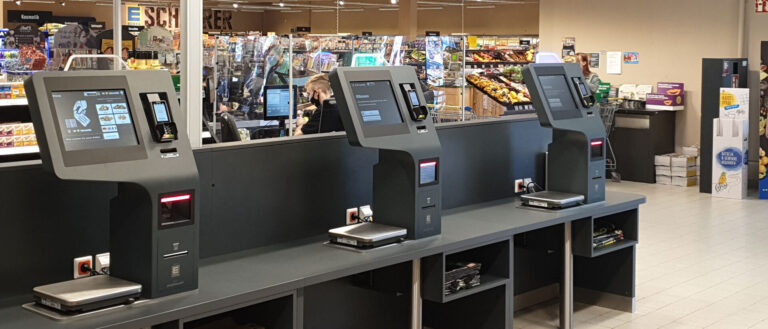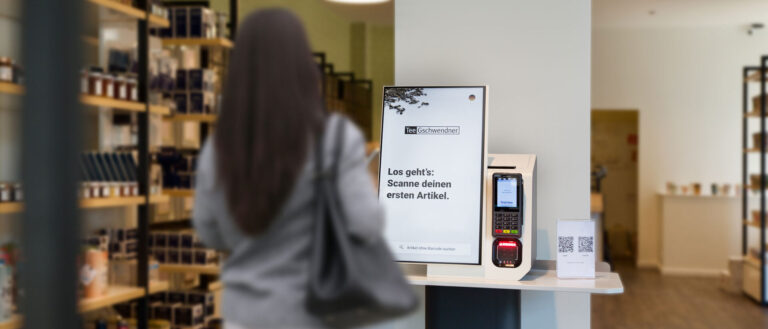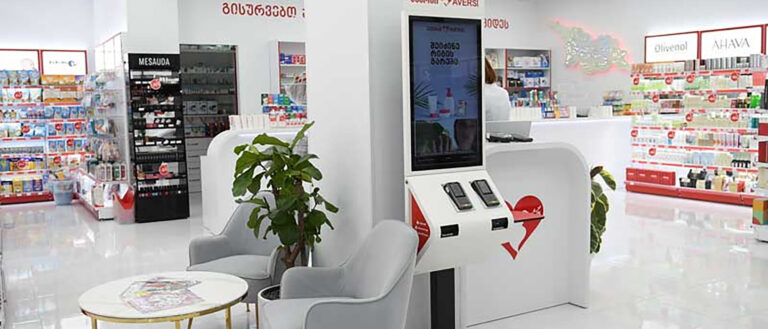Für den Einzelhandel Self-Checkout Lösungen
Self-Checkout auf dem Vormarsch!
Herkömmliche Kassen sind in Deutschland noch in der Überzahl. Das wird sich in den nächsten Jahren schnell ändern, da der Verbraucher für den Einsatz von Selfservice-Technologie sehr viel offener geworden ist.
Alle Altersgruppen sehen die Selbstbedienungskasse auf dem Vormarsch. Laut der Studie Die Zukunft des Einkaufens, die das Marktforschungsunternehmen Kantar vorlegte, gehen 86 % der rund 3.000 Befragten (Alter 18–65) davon aus, dass bereits im Jahr 2030 konventionelle Kassen weitgehend ersetzt sein werden.
Wenn es um die Digitalisierung des Point of Sale geht, ist es wichtig zu wissen: SB-Kasse ist nicht gleich SB-Kasse. Welches Produkt das richtige ist und schließlich zum Einsatz kommt, entscheidet sich am Use Case.
Um nur zwei Beispiele zu nennen: Wo große Warenkörbe zum Self-Scanning durch den Kunden anstehen, sind zum Erkennen des Barcodes auf den Artikeln andere Scanner zu verbauen, als in der Self-Checkout-Lösung für das Teefachgeschäft, wo es beschaulicher zugeht und Einkaufen mehr Vergnügen als Notwendigkeit ist.
Und im Fashion-Store wird die Selbstbedienungskasse ein Kombigerät mit sehr großem Touchdisplay sein, das es dem Kunden ermöglicht, das Online-Sortiment des Einzelhändlers zu durchstöbern. Ein solches System ist also zugleich Self-Checkout Lösung und Endless Aisle.
Vorteile von Self-Checkout Kiosken
Kundenzufriedenheit
Erhebungen zeigen, dass 70 % der Kunden wegen langer Wartezeiten ihren Einkauf abbrechen. Self-Checkout-Kassen schaffen hier Abhilfe, da sie die Schlangen an herkömmlichen Kassen verkürzen und so Wartezeiten reduzieren. Das verbessert die Customer Experience und steigert den Umsatz.
Prozessoptimierung
Selbstbedienungskassen verbessern die Instore-Prozesse des Einzelhandels. SB-Kassen verschlanken z. B. den Bezahlprozess. Da an ihnen im Regelfall ausschließlich mit EC- oder Kreditkarte bezahlt werden kann, reduziert sich der Aufwand des Einzelhändlers fürs Cashhandling erheblich.
Erhöhung der Produktivität
Der Einsatz von Self-Checkout-Kassen entlastet Mitarbeiter vom Abkassieren, sodass sie sich stärker auf kundenorientierte Aufgaben wie Beratung, Regalpflege, Leergut-Management und Dekoration konzentrieren können – Bereiche, die die Markenbindung fördern.
Sicher einkaufen
Die COVID-19-Pandemie hat das Hygienebewusstsein der Verbraucher gestärkt. Self-Checkout-Kassen fördern kontaktloses Einkaufen und ermöglichen Social Distancing. Die antibakterielle Beschichtung des Touchdisplays bietet zusätzliche Sicherheit.
